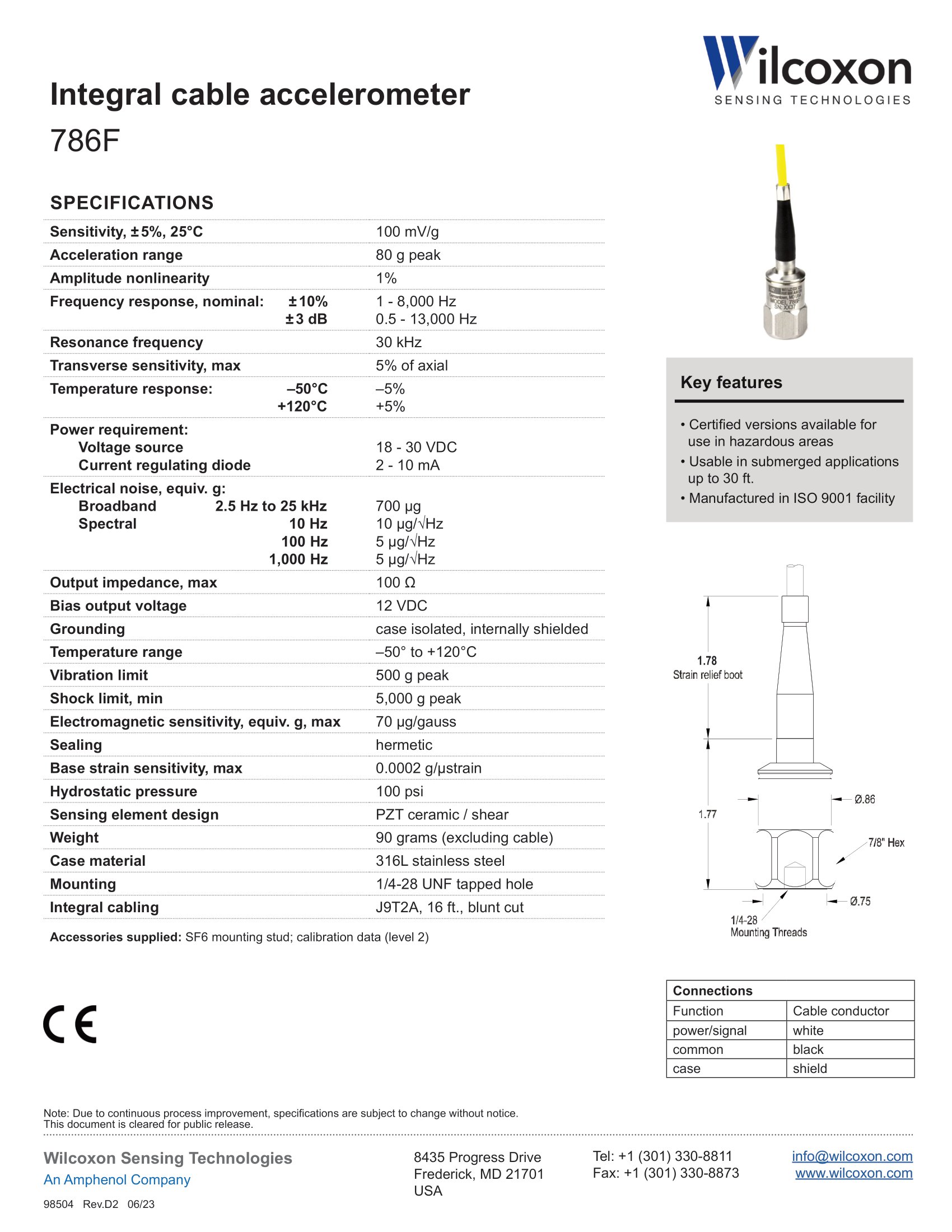
Accelerometer sensor, general purpose, 100 mV/g sensitivity, ±5% sensitivity tolerance, top exit integral cable, 16 ft. J9T2A Teflon jacketed cable

| PARAMETER | VALUE |
|---|---|
| Sensor output | Dynamic vibration (IEPE) |
| Sensitivity | 100 mV/g |
| Sensitivity tolerance | ±5 % |
| Frequency response, ±3 dB | 0.5 Hz – 13,000 Hz |
| Mounting thread | 1/4-28 UNF tapped hole |
| Connector style | Integral cable |
| Connector orientation | Top exit |
| Full-scale range | 80 g peak |
| Resonance frequency | 30 kHz |
| Temperature range | -50°C to +120°C |
| Weight | 90 grams |
| Hazardous area approvals | Non-approved; approved models available |

| Phone | 303-279-7797 |
|---|---|
| TollFree | 800-279-7796 |
| Fax | 303-278-9909 |
| Address | 1075 S Yukon St, Suite 100 Lakewood, CO 80226 |
Stay connected! Subscribe to our newsletter to stay up to date with all the latest products.